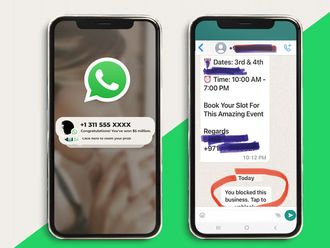
Dubai: With digital devices and applications taking over consumers’ work and leisure lives, the question ‘What’s next?’ is omnipresent to marketers on each of the advertiser, agency, and supply sides. Among long-term trends that we now consider to be the norm in MENA’s digital landscape, a few components stand out.
The rise of mobile handsets has been rapidly providing internet access to more people. Enabled by broadband connection on almost 40 per cent of handsets, over 43 per cent of measured page views are now coming from mobile devices. As such, investments have been pouring into content marketing, driving multi-screen usage further and increasing the aggregate media consumption among users.
This continuous form of connectivity has pushed the retail sector to adapt its ubiquity in offer, leading to a projected $15 billion e-commerce industry in 2015, with a 41 per cent CAGR (compounded annual growth rate) in mobile commerce.
What group buying middlemen such as Groupon and Living Social ignited a few years ago, vertical specialists — including Namshi, MarkaVIP and Mumzworld — eventually took over through value and convenience bids. Today, digital propositions shape retail beyond offer.
Loyalty programmes like Snappcard and e-payment gateways, such as Beam, help providers in collecting valuable behavioural and purchase level data, allowing the brick-and-mortars to take data-based decisions — similarly to virtual carry-alls like Souq and Tejuri, or even the region’s growing portfolio of online grocery stores.
So, what’s next? Let’s outline regional key trends that will shape digital media in 2015.
Prompted by faster consumer connectivity, superior media ROI (return on investment), and continuous innovation in video formats, the online video category will keep growing exponentially. Competition for video budgets will fiercely increase as social networks join YouTube in its ambition of contesting traditional TV budgets.
Facebook’s monthly video consumption has risen to three billion views, and Twitter’s video product has expanded to audiences outside of the platform. Regional channels, such as BeinSports or the Choueiri Group-backed OLN.tv and Dubai.tv, have recognised this inevitable transition and are looking at expanding their extensive TV audiences online.
As production talent scales and multichannel networks grow, creators will seek more choice in beneficiary ad revenue-sharing models outside of YouTube — today’s primary solution. Smart TVs are projected to penetrate 40 per cent of MENA households in 2015, hinting at the role connected systems will play in distributing digital messages on TV sets.
MBC’s VoD platform Shahid’s app pre-installation on Samsung sets and the support of ads in YouTube’s app for Apple TV are two tangible examples of this trend. On the other hand, UAE-based VoD platform ICFlix is already following in the footsteps of Netflix or Amazon in on-demand streaming media; a model that, at broad consumer adoption, defies paid message distribution.
Originally focused on performance advertisers, programmatic media buying will become the fastest growing lane in MENA’s digital industry, unlocking the larger branding budgets. More premium publishers will join the likes of Choueiri Group, Connect Ads, Diwanee and Dubizzle by developing programmatic propositions that would boost inventory monetisation.
In turn, the sophistication of marketers will determine the speed of market development, as advertisers will start to claim tech and data ownership in-house. Yet, agency trading desks are turnkey in increasing advertiser ROI through the infusion of local behavioural audience data combined with hyper local carrier level data.
WhatsApp, the globe’s largest messaging service, has historically pledged to remain ad-free. And with prominent players such as Spotify, Google’s Contributor, or YouTube’s Music already exploiting ad-free content models, it is not a surprise that MENA’s media owners will follow this trend.
Anghami+ or Shahid Premium are regional examples of ad-free content delivery. Ad-blocking consumers present a challenge in message distribution to advertisers, adding importance to smart content marketing and thorough understanding of reward-based ad formats.
Ninety per cent of Saudis and 60 per cent of Egypt’s mobile consumers utilise handsets to check prices and product reviews while shopping — with three out of four having interrupted a purchasing process based on the acquired info. This new level of transparency will force marketers to adapt on two fronts: firstly, they will need to turn in-store media efforts into precision marketing; local telcos and retailers will collaborate to present technology solutions to address consumers at the shelf space.
Secondly, they must embrace mobile content and ensure positive experiences for consumers making product and service queries and comparisons.
With the likes of Uber and Airbnb exemplifying the emergence of collaborative services on a global level, MENA markets will leverage the sharing economy to facilitate the basics in daily life.
Platforms tackling fundamental problem areas — for instance, carpooling solutions like CarpoolArabia, Taree2y, Bey2ollak and Wasalny respond to traffic congestion — or supply gaps — with Zoomal and Eureeca showing notable success for crowdfunding and crowd-investing start-ups in the region — have been as valuable as C2C marketplaces.
Advertisers will eventually have to develop equally functional solutions that integrate in such user-friendly environments; one way may be to partner up with services early on to stay ahead of the curve — instead of asking: ‘What’s next?’.
The writer is Digital Director at SMG, the media buying entity.











